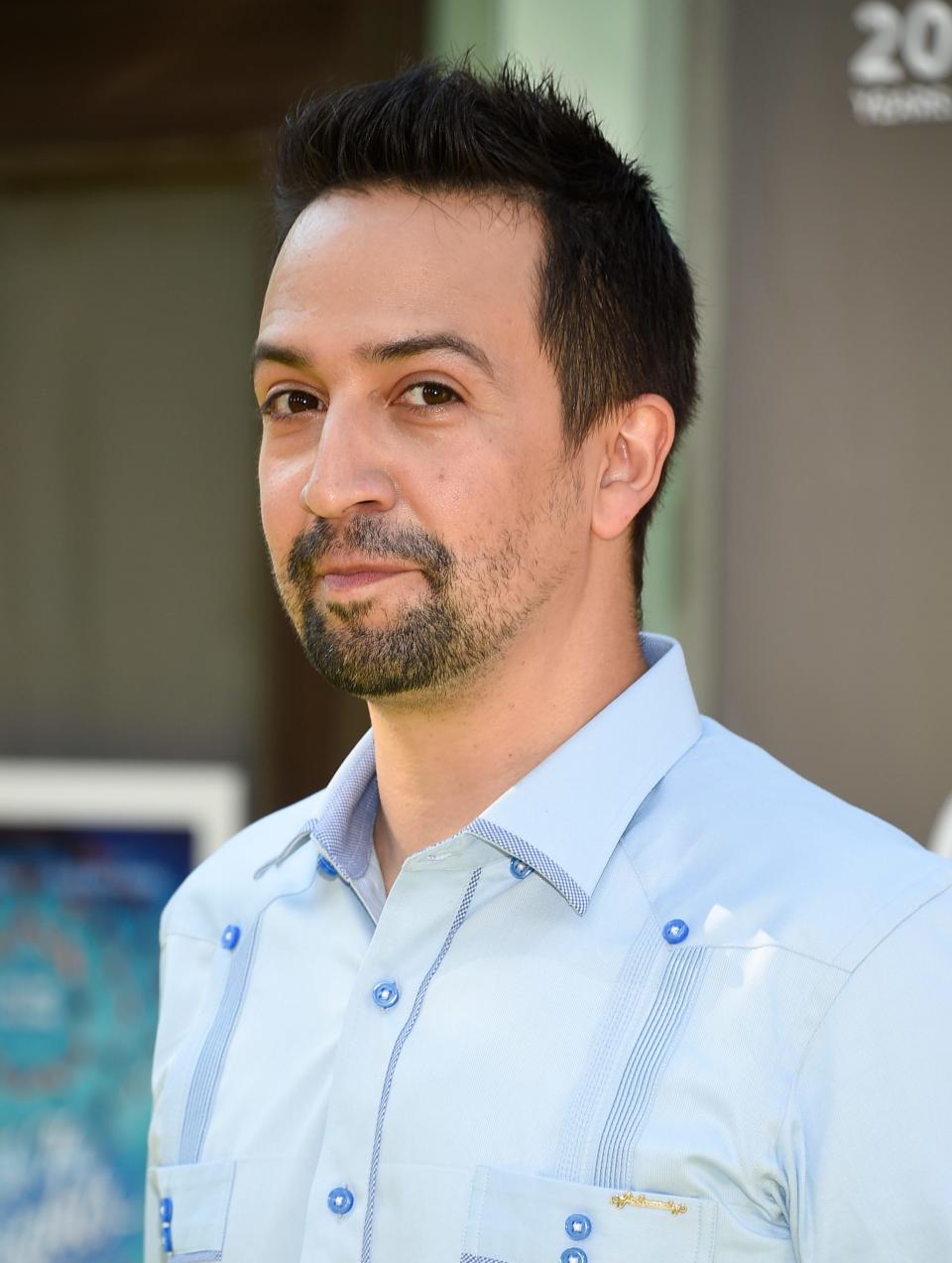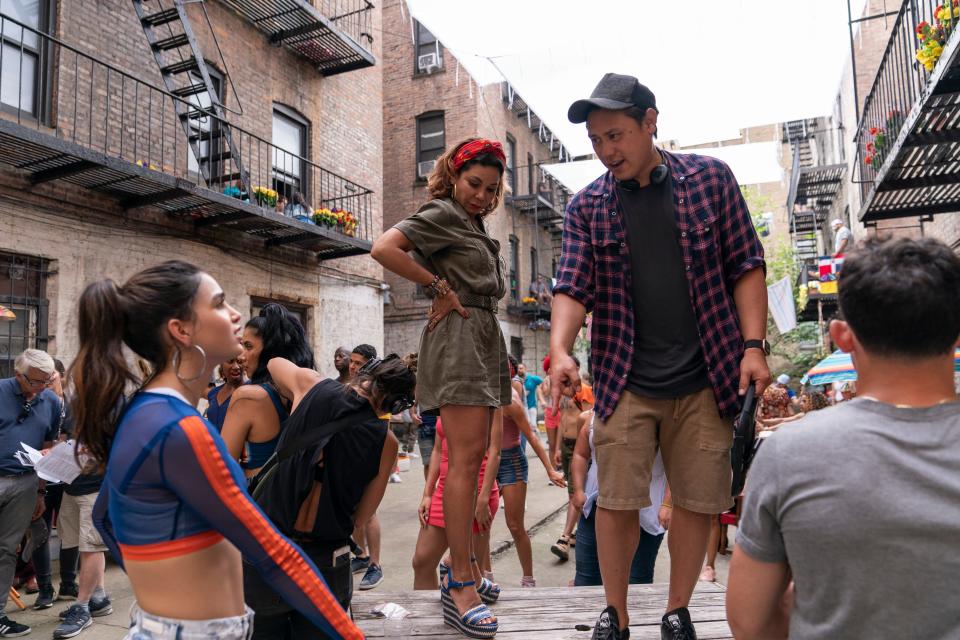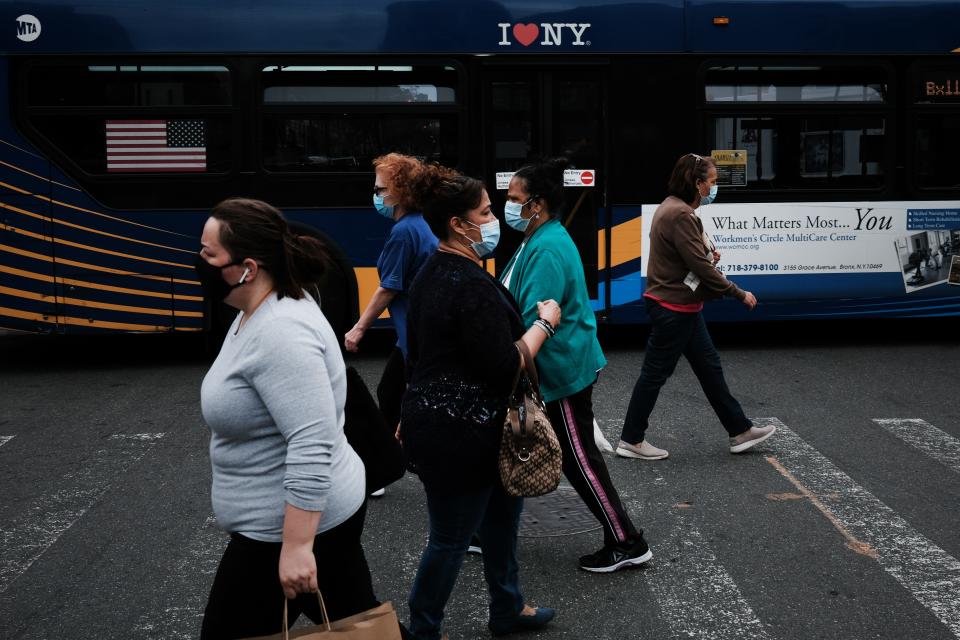'In the Heights' movie slammed for lack of Black Latinos in New York's diverse Washington Heights
Growing up in the Washington Heights neighborhood of New York City, Emmanuel Abreu saw people who looked like him walking down the street, going to the bodegas on his block and speaking Spanish at almost every place he stepped foot in. Many of them were Black Latinos.
But in “In the Heights,” the recent film adaption of the hit Broadway musical of the same name that focuses on a Latino community in Washington Heights grappling with gentrification, immigration and the struggles of being a first-generation American, few of the actors with speaking parts are dark-skinned Black people. That didn't sit right with Abreu.
“There were some steps that could have been taken and they missed the mark,” he said.
While many Latinos have celebrated “In the Heights” for its rare representation of Latino culture in mainstream, English-language media, the growing outcry over the film’s erasure of Black Latinos has cast a shadow over its release. Critics within Washington Heights and beyond argue that the movie's cast is an insult to the Afro-Latino community that has long driven the music, food and culture of Latin America, especially in the Dominican Republic, Cuba, Puerto Rico and other Latino homelands highlighted in the movie.

From the stage to the big screen, “In the Heights” tells a story of the Washington Heights neighborhood in Upper Manhattan and Bodega owner Usnavi de la Vega, along with his Dominican family and a diverse group of Latino and African American friends and neighbors. The Broadway production was nominated for 13 Tony awards and won four in 2008.
Felice León, an Afro-Latina reporter for The Root, helped raise awareness about the perceived colorism in the film during an interview with “In the Heights” director Jon M. Chu. In a now-viral video, Chu, who is Asian American, said the production chose actors who were the best fit for their roles.
“In the Heights” stars a diverse cast of African American, Mexican, Puerto Rican, Argentine, Panamanian and Dominican actors, among other ethnicities. Chu said the film showcased Black Latino actors as extras in the many musical scenes portraying people of Washington Heights dancing or walking in their neighborhood.
“I hear you on trying to fill those cast members with darker skin. I think that’s a really good conversation to have and something we should all be talking about,” the director added.
His statements were highlighted by critics as the latest example of anti-Black racism in entertainment. Hollywood films have long opted to focus on white Americans while largely excluding stories of people of color. In 2020, people of color made up about 40% of all lead roles, or about proportionate to their makeup in the U.S. population, for the first time since 2014, when the University of California, Los Angeles, began tracking such data. People of color only made up 25% of all directors and 26% of film writers, UCLA found.
Roughly 24% of Latinos in the United States identify as Black, according to a 2016 Pew Research Center report.
Lin-Manuel Miranda, creator of “In the Heights” and a Puerto Rican New Yorker, released a statement Monday night on Twitter apologizing for the lack of Black Latino representation in the movie.
"I hear that, without sufficient dark-skinned Afro-Latino representation, the world feels extractive of the community we wanted so much to represent with pride and joy. In trying to paint a mosaic of this community, we fell short. I'm truly sorry," he wrote.

He said he was learning from the feedback and promised to do better in future projects.
Many Black Americans and Latinos have supported the film.
Puerto Rican actor Rita Moreno, a fair-skinned Latina, defended "In the Heights" this week while appearing Tuesday night on "The Late Show with Stephen Colbert." "I'm simply saying, 'Can't you just wait a while and leave it alone?'" she said of Black Latinos' criticism of the movie. "There's a lot of people who are Puertorriqueño, who are also from Guatemala, who are dark and who are also fair. We are all colors in Puerto Rico. This is how it is, and it would be so nice if they hadn't come up with that and left it alone, just for now. I mean, they're really attacking the wrong person."
Moreno apologized Wednesday for her remarks.
"I was clearly dismissive of Black lives that matter in our Latin community," Moreno said.

But for many Black Latinos, the film represented the latest slight from other Latinos they accuse of downplaying their culture's history of slavery, violence, segregation and anti-Black racism.
Zahira Cabrera, an artist and writer, was unhappy with how the movie portrayed her former hometown. Cabrera grew up in New York City's Bronx borough and visited Washington Heights often. She moved to the Dominican Republic, her family's homeland, a few years ago.
She said she rarely sees Black Latinos cast in the few Latin American films and shows that are greenlit by Hollywood.
“There’s like ‘The George Lopez Show’ or ‘One Day at a Time’... you can name a few things, but on Latin America television, you can’t name any Black shows,” said Cabrera.
She said the movie also did not accurately portray the neighborhood's Spanish-speaking majority. If you go to Washington Heights, you don’t have to speak English if you don’t want to, Cabrera said.
"The majority of the shopworkers and people in this community speak Spanish," she said.
Marjua Estevez, a first-generation Dominican American born in Washington Heights, said the movie was a failed opportunity to tell the unique stories of those who call the community home and the contributions of Dominicans to American culture, such as bachata and dembow music, and food, among other gifts.
"After frequenting the island myself as an adult, I draw a clear umbilical cord between el alto Manhattan and Santo Domingo. Washington Heights as we know it today is thanks to the Black Dominican diaspora." Estevez said, referring to Upper Manhattan in Spanish. "We brought bachata, merengue and today’s bubbling dembow to the streets."
Estevez said she sees the Dominican Republic as a "negro nation" whose immigrants filled the streets of Washington Heights with the smells of patacones, or twice-fried green plantains, and other fried vegetables and meats known as frituras. The immigrants took what they knew from their island and "trimmed all of upper Manhattan with their BBQs, riverside coros, and then some," she said, using a word that means parties in Dominican Spanish.
Other Black Dominicans also had hoped to see themselves in "In the Heights."
Abreu said Hollywood producers should work harder to truly reflect the diversity of the Latinx community.
Abreu said Hollywood’s seemingly outdated conception that only light-skinned actors boost movie ticket sales does not reflect the nation’s shifting demographics. In fact, people of color are more likely than white Americans to buy movie tickets during an opening weekend, the UCLA report found.

Despite his concerns about the lack of Black representation, Abreu said he was excited to see a movie showcase his Latino community. The movie’s salsa and rap soundtrack, family-orientated scenes, and salsa dancing is the best representation he has seen of his hometown, he said.
Washington Heights, he said, is the loudest neighborhood in New York. The movie beautifully represents that, he said.
Still, he expected more from “In the Heights,” he said.
“The next movie that Miranda does could be a real slap in the face saying ‘hey, these are the people we should be showing,’” he said.

This article originally appeared on USA TODAY: 'In the Heights' movie: Lack of Black Latinos sparks growing backlash

 Yahoo Movies
Yahoo Movies 
